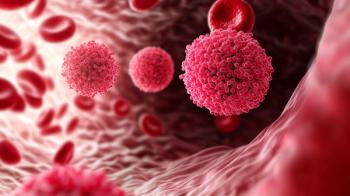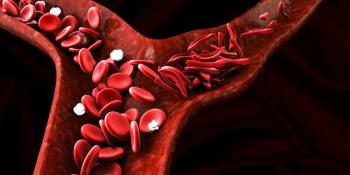- July 2025
- Volume 91
- Issue 7
Pharmacists Can Educate Patients About Sun Safety
Key Takeaways
- Pharmacists are pivotal in sun safety education, emphasizing sunscreen use, protective clothing, and skin checks to prevent skin cancer.
- The SCAN program showed pharmacist-led interventions improved patient knowledge on sunscreen application and melanoma signs.
Particularly during summer months, counsel patients about sunscreen recommendations and drug-induced photosensitivity prevention strategies.
July is UV Awareness Month and a great time for pharmacists to showcase sun safety clinical pearls.1 The American Academy of Dermatology (AAD) recommends steering clear of the sun’s UV rays through prevention strategies such as applying sunscreen, seeking shade, and wearing sun-protective clothing.1 These tips are an important part of skin cancer prevention. The AAD created SPOT Skin Cancer, a skin cancer awareness program that offers sun safety tips, demonstrates skin self-examinations, and lists where to get free skin cancer checks.2 Pharmacists play a vital role in educating patients about sun safety through medication therapy management (MTM).
MTM and Sun Safety
One study evaluated the Skin Cancer Awareness Now (SCAN) pilot program in community pharmacies in West Virginia.3 The study was performed through preintervention and postintervention surveys of SCAN with 90 participants at underserved Appalachian community pharmacies.3 Pharmacists and student pharmacists were involved in the program, with the goal of educating patients about sun safety and decreasing the risk of skin cancer in a medically underserved population.3 The study results found that after the intervention, most patients had improved knowledge about the amount of sunscreen needed per application (66%; P < .01).3 Additionally, patients were more knowledgeable about the signs of melanoma (39%; P < .01).3 These study findings highlight the important role pharmacists play in sun safety.
In an email interview with Pharmacy Times, Ashlee Nhu Le, PharmD, a consultant pharmacist with Walmart Pharmacy, discussed sun safety tips.
About the Author
Jennifer Gershman, PharmD, CPh, PACS, is a drug information pharmacist and Pharmacy Times contributor who resides in South Florida.
Pharmacists can educate patients about sun safety during MTM consults. The AAD recommends broad-spectrum sunscreen products with a sun protection factor (SPF) of 30 or higher with water resistance.4 An SPF of at least 30 blocks 97% of the sun’s UV-B rays.4 Adults typically need approximately 1 oz of sunscreen to fully cover their skin, and pharmacists can educate patients that this is about the amount needed to fill a shot glass. Patients should also apply lip balm that contains sunscreen and seek shade whenever possible, especially when the sun’s rays are strongest, between 10 AM and 2 PM.4 Wearing sun-protective clothing is also an important counseling point. This includes a hat, sunglasses with UV protection, and clothing with a UV protection factor.4
Pharmacists can also help identify certain medications that may cause drug-induced photosensitivity reactions. Examples include nonsteroidal anti-inflammatory drugs, isotretinoin (Accutane), tetracycline antibiotics, thiazide diuretics, and amiodarone (Nexterone; Baxter).5 Because these medications can increase the risk of patients experiencing a sunburn, it is important to take extra precautions outdoors.
Pharmacists can also educate patients to perform routine skin checks to look for signs of cancer. If anything looks suspicious, recommend that patients consult with a dermatologist. Skin cancer that is caught early is highly treatable. The ABCDEs can serve as a guide to identify melanoma (see Table6).
REFERENCES
It’s UV Awareness Month! Take a look at how AAD promotes sun safety year-round. American Academy of Dermatology. Accessed June 5, 2025. https://www.aad.org/member/advocacy/promote/uv-awareness
SPOT Skin Cancer seeks a world without skin cancer. American Academy of Dermatology. Accessed June 5, 2025. https://www.aad.org/public/public-health/skin-cancer-awareness
Kelly KM, Dhumal T, Scott VG, et al. SCAN! a pharmacy-based, sun safety feasibility study. J Am Pharm Assoc (2003). 2021;61(1):e69-e79. doi:10.1016/j.japh.2020.10.004
Sunscreen FAQs. American Academy of Dermatology. Accessed June 5, 2025. https://www.aad.org/media/stats-sunscreen
Monteiro AF, Rato M, Martins C. Drug-induced photosensitivity: photoallergic and phototoxic reactions. Clin Dermatol. 2016;34(5):571-581. doi:10.1016/j.clindermatol.2016.05.006
What to look for: ABCDEs of melanoma. American Academy of Dermatology. Accessed June 5, 2025. https://www.aad.org/public/diseases/skin-cancer/find/at-risk/abcdes
Articles in this issue
4 months ago
Product News for July 20255 months ago
Pharmacy Policy Updates for July 20255 months ago
OTC Case Studies: Family Planning5 months ago
Invest a Few Minutes in Inhaler CounselingNewsletter
Stay informed on drug updates, treatment guidelines, and pharmacy practice trends—subscribe to Pharmacy Times for weekly clinical insights.




















































































































































































































